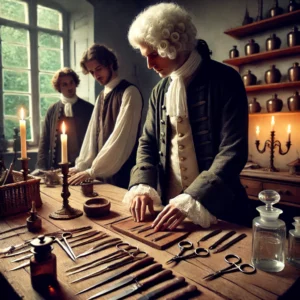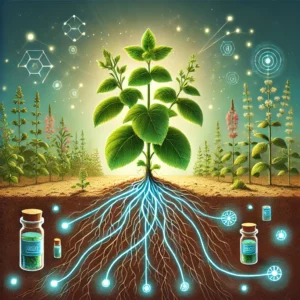Similia Similibus Curentur which literally means “like cures like”, is the foundational concept of Homeopathy. At the beginning, it emerged as a revolutionary approach during a time when harsh medical practices were commonly used in treatment. Let’s rephrase it perfectly, Homeopathy is a clinical therapeutic method developed by Samuel Hahnemann in 1796, during a time where people literally withdraw blood from veins through incisions for better immunity. Medical practices in 18th century was extremely harsh, I can list some few of them
Curentur which literally means “like cures like”, is the foundational concept of Homeopathy. At the beginning, it emerged as a revolutionary approach during a time when harsh medical practices were commonly used in treatment. Let’s rephrase it perfectly, Homeopathy is a clinical therapeutic method developed by Samuel Hahnemann in 1796, during a time where people literally withdraw blood from veins through incisions for better immunity. Medical practices in 18th century was extremely harsh, I can list some few of them
- Trepanation:- Its drilling a hole in the skull to relieve the pressure due to migraine or to treat epilepsy
- Mercury Treatments: Patients were given mercury pills, which very toxic
- Lobotomy: Surgeon will insert an instrument in the skull through the eye socket, This method is used for treating mental illness
- Blistering: it is used to heal inflammation or to draw illness, a heated cup or chemical were poured to create blisters

The discovery of Homeopathy was great news for the people who were suffering from these diseases. It devised an alternative form of treatment which can cure the disease using potentized natural remedies to stimulate body’s own healing process
While traditional Homeopathy focuses on curing illness on humans and animals, Agro Homeopathy gave this approach to the plant world.
Materia Medica was developed for humans. How we can apply for plants? Since there is a huge difference between humans and plants in morphology and Biochemically. It is a challenge for the researchers in the 21st century to bring remedies based on core principle of homeopathy.
Early key contributors were Christian Daniel F. J. Demarque, Eugenio Federico Candegabe,
Vaikunthanath Das Kaviraj.
Well, how did they accomplish Agro-homeopathy, So, agro homeopathy is like homeopathy for plants. Here’s the lowdown on how it works:
- Diagnosis:
For plants, you gotta check out their symptoms, how they’re growing, the environment they’re in, and the soil health. It’s about spotting stress signs, diseases, or if they’re missing any nutrients.
2.Choosing Remedies:
You pick remedies based on what the plant needs. This means different treatments depending on the plant type, its specific traits, and what problems it’s dealing with.
3.How Its Applied:
Instead of taking remedies like humans do, plants get treated with sprays on their leaves or by adding stuff to the soil. The remedies are diluted and applied directly where the plant can take them in.
4.Biotype and Environment:
Agro homeopathy considers the plant’s biotype (basically its genetic type) and its growing conditions. Different plants might need different remedies based on their own characteristics and where they’re growing.
5.Energetic Effects:
The idea is to affect the plant’s vital force and get it back in balance. Remedies are used to not just fix physical problems but also to help with stress factors that might be affecting the plant’s health.
6.Preventive and Boosting Treatments:
The focus is on preventing issues and boosting plant health. Remedies are used to help plants handle potential problems better and to make them more resilient overall.
So yeah, while the core ideas of homeopathy are similar, agro homeopathy tweaks them to better fit plant needs.


